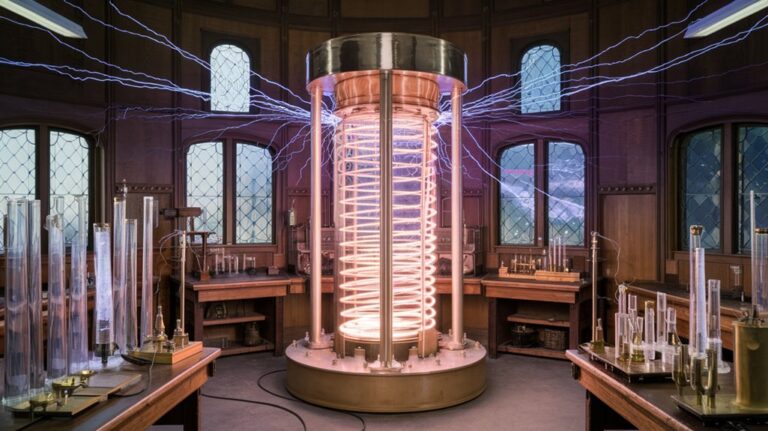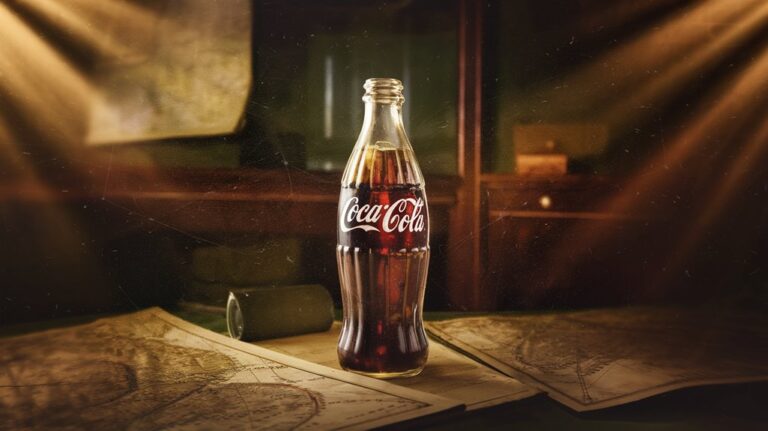How Mary Anderson’s Windshield Wiper Battled Blizzards and Changed Commutes
Like a blade of grass pushing through winter snow, Mary Anderson's simple invention cut through decades of dangerous driving conditions. You've probably never given much thought to those rubber strips sweeping across your windshield, but in 1903, they represented a revolutionary leap in automotive safety. Before Anderson's breakthrough, drivers faced a stark choice: pull over to clear their windshields or risk driving blind through storms. What prompted this Southern entrepreneur to tackle one of winter's most perilous challenges?
A Snowy Day in New York Sparks an Idea

While visiting New York City during the winter of 1902, Mary Anderson noticed a streetcar driver's constant struggle with snow-blocked visibility.
You can imagine the scene: a frustrated driver repeatedly opening windows or stopping the streetcar to clear the windshield, putting both schedule and safety at risk. This visibility challenge was a common problem that plagued not just streetcars but also early automobiles of the era.
Anderson's inspiration moment came as she watched this inefficient practice unfold before her eyes. She would later submit and receive her patent in 1903.
Rather than accept this dangerous routine as inevitable, she envisioned a solution that would allow drivers to clear their windshields while remaining safely inside their vehicles. Her revolutionary design included a lever-operated rubber blade that could effectively sweep across the glass.
This simple observation during her winter trip would soon lead to an invention that would revolutionize transportation safety.
From Southern Belle to Innovative Inventor
Despite her upbringing as a traditional Southern belle, Mary Anderson's life defied the conventions of her era. You'd be hard-pressed to find another woman of her time who showed such Southern resilience after being orphaned at age 4, only to emerge as a successful businesswoman and inventor.
Her entrepreneurial journey took her from managing Birmingham real estate to operating a California cattle ranch and vineyard.
When she returned to Birmingham in 1898 to care for her ailing aunt, an inheritance of gold and jewelry secured her financial independence.
Her patent of 1903 would revolutionize driving safety during inclement weather.
While many women of her era focused on marriage and family, Anderson chose a different path. She managed the Fairmont Apartments and ventured into multiple business endeavors, proving that a Southern lady could excel in traditionally male-dominated fields.
Her invention emerged from a simple New York City trolley ride where she witnessed a motorman struggling with snow on his windshield.
The Mechanics Behind the Window Cleaning Device
Three simple components formed the heart of Anderson's groundbreaking invention: a lever inside the vehicle, a spring-loaded arm, and a rubber blade.
The mechanical design was remarkably straightforward – you'd operate the lever from inside, which would cause the wiper arm to swing across your windshield, clearing away rain, snow, and sleet. Despite early skepticism from manufacturers, the design proved highly effective.
The operational efficiency came from its clever features. A counterweight at the end guaranteed the rubber blade maintained constant contact with the glass, while the spring-loaded action allowed just enough pressure to clean effectively without damaging the mechanism. U.S. Patent 743,801 was granted for this innovative design in 1903.
You could easily remove the device after winter, and if the wiper struck any obstacles, its yielding design prevented breakage.
The genius lay in its simplicity – you could operate it in either direction, making it a practical solution for drivers battling harsh weather.
Early Skepticism and Commercial Setbacks
Although Mary Anderson secured her patent for the "Window Cleaning Device" in 1903, her invention faced immediate skepticism from manufacturers who couldn't grasp its potential.
Her original design featured a wooden strip with rubber that could be operated through a lever system from inside the vehicle.
When she approached Dinning and Eckenstein in 1905, they dismissed her innovation as lacking commercial viability, reflecting the industry's shortsightedness at the time.
The skepticism challenges extended beyond market concerns. Industry executives worried that the moving wipers would distract drivers and cause accidents, failing to recognize how essential this safety feature would become.
You'll find it ironic that while Anderson's patent expired without profit in 1920, Cadillac made wipers standard equipment just two years later.
Her invention was simply ahead of its time – emerging before the Model T sparked widespread automobile adoption. By the time wipers became universal, Anderson's patent had already lapsed.
The invention was inspired when she witnessed a streetcar struggling to navigate through a sleet storm, leading her to develop this revolutionary solution.
Transforming Road Safety One Swipe at a Time

While Mary Anderson's invention initially faced skepticism, her windshield wiper revolutionized road safety in ways early critics couldn't imagine. When you're driving in harsh weather, you'll understand why wipers are essential – they reduce your accident risk considerably, especially since 34% of fatal crashes occur during rain or snow.
The invention's humble beginnings as a hand-operated device in 1903 laid the groundwork for modern automotive safety.
With nearly 6,000 deaths occurring annually from weather-related accidents in the United States, the importance of functioning wipers cannot be overstated.
Today's wiper advancements have transformed from Anderson's simple manual design into sophisticated systems that enhance driver visibility in challenging conditions.
With 42% of collisions caused by poor visibility and 90% of driving decisions based on what you can see through your windshield, it's clear why wipers became mandatory safety equipment.
 Birmingham, Alabama in 1866, Anderson developed her innovative spirit early in life while observing transportation challenges.
Birmingham, Alabama in 1866, Anderson developed her innovative spirit early in life while observing transportation challenges.
A visit to New York City in 1902 proved pivotal when she witnessed a streetcar driver struggling with snow-covered windshields.
While her invention initially faced rejection from manufacturers who thought moving wipers would distract drivers, you can now see her innovative spirit in every vehicle on the road.
As one of America's pioneering female inventors, Anderson's contribution to automotive innovation became apparent when Cadillac began installing wipers as standard equipment in 1922.
Though her patent expired in 1920 without commercial success, her design laid the foundation for modern road safety.
Her 2011 induction into the National Inventors Hall of Fame cemented her place among history's most influential innovators.
Today, you'll find her legacy living on in the simple yet essential device that helps millions of drivers navigate safely through rain and snow.










